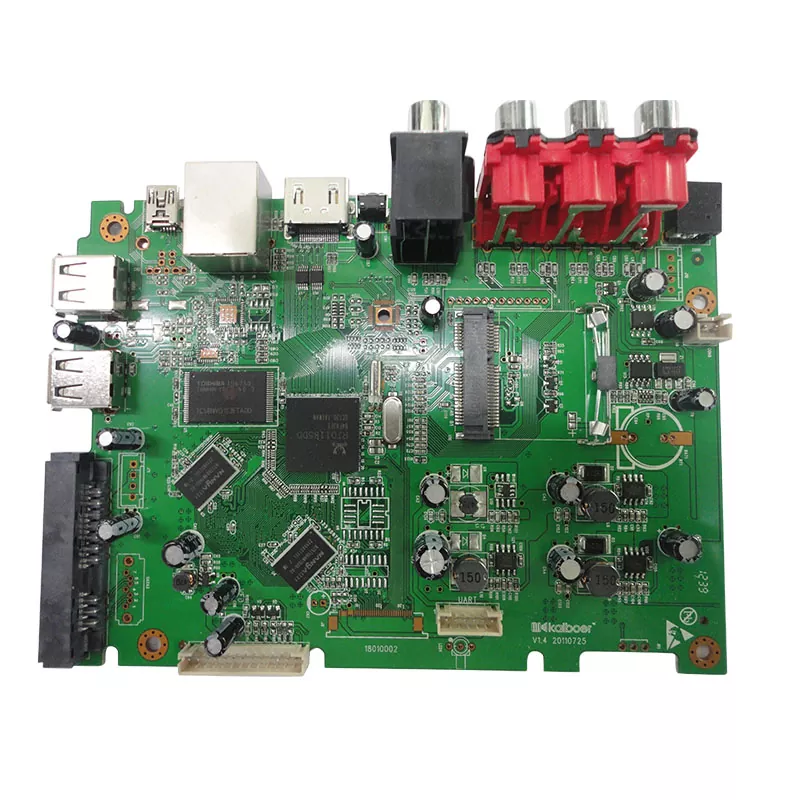- English
- Español
- Português
- русский
- Français
- 日本語
- Deutsch
- tiếng Việt
- Italiano
- Nederlands
- ภาษาไทย
- Polski
- 한국어
- Svenska
- magyar
- Malay
- বাংলা ভাষার
- Dansk
- Suomi
- हिन्दी
- Pilipino
- Türkçe
- Gaeilge
- العربية
- Indonesia
- Norsk
- تمل
- český
- ελληνικά
- український
- Javanese
- فارسی
- தமிழ்
- తెలుగు
- नेपाली
- Burmese
- български
- ລາວ
- Latine
- Қазақша
- Euskal
- Azərbaycan
- Slovenský jazyk
- Македонски
- Lietuvos
- Eesti Keel
- Română
- Slovenski
- मराठी
- Srpski језик
What Are the Advantages of QFN PCB Assembly?
2024-10-03

What are the advantages of QFN PCB Assembly?
- QFN PCB Assembly offers a smaller footprint, which is ideal for applications where space is limited. The compact size of QFN packages also makes it easier to fit more components onto a single PCB, which can help reduce costs and improve system performance.
- QFN PCB Assembly provides a lower thermal resistance, which allows for faster heat dissipation. This can be particularly beneficial for applications that require high power output or for devices that generate a lot of heat during operation.
- QFN PCB Assembly is a cost-effective solution, as it uses less material than other types of packages. This can help reduce the overall cost of production and make it easier for manufacturers to produce large quantities of PCBs.
- QFN PCB Assembly is a reliable and durable solution, as it is less prone to mechanical failures. The design of QFN packages helps protect the chip from damage, which can help extend the lifespan of the device.
What are some common applications of QFN PCB Assembly?
- QFN PCB Assembly is commonly used in consumer electronics, such as smartphones, tablets, and wearable devices.
- QFN PCB Assembly is used in industrial applications, such as automation equipment, data loggers, and motor control systems.
- QFN PCB Assembly is also used in automotive applications, such as radar systems, engine control modules, and powertrain systems.
What should you consider when choosing QFN PCB Assembly?
- You should consider the dimensions of the QFN package to ensure that it can fit into the available space on your PCB.
- You should consider the thermal performance of the QFN package to ensure that it is suitable for your application.
- You should also consider the number of leads and the pitch of the QFN package, as this can affect the overall performance of the device.
Conclusion
QFN PCB Assembly is a cost-effective, reliable, and durable solution for many applications that require a small footprint and high thermal performance. When choosing QFN PCB Assembly, it is important to consider the dimensions, thermal performance, and pitch of the package to ensure that it is suitable for your application.
Shenzhen Hi Tech Co., Ltd. is a leading manufacturer of PCBs and provides a wide range of high-quality PCB assembly services. Our products and services are designed to meet the needs of customers in a variety of industries, including consumer electronics, industrial automation, and automotive. For more information about our products and services, please visit our website at https://www.hitech-pcba.com. For inquiries and further assistance, please contact us at Dan.s@rxpcba.com.
Research Papers:
- F. Assaderaghi and F. Blaabjerg, "Parallel power processing—An overview," IEEE Trans. Ind. Electron., vol. 51, no. 3, pp. 542–553, Jun. 2004.
- E. Brauns, T. Musch, H. Jayapala, and B. Ponick, "Optimized design of switched reluctance contactors for use in electric vehicles," IEEE Trans. Ind. Electron., vol. 62, no. 2, pp. 1244–1251, Feb. 2015.
- H. F. Hofmann, "Robot mechanics and control: First steps to robotics," IEEE Robot. Automat. Mag., vol. 2, no. 3, pp. 14–20, Sep. 1995.
- D. W. H. Kühlmann, R. Ernst, and R. Wolski, "System-level design: Orthogonalization of concerns and platform-based design," IEEE Trans. Comput.-Aided Design Integr. Circuits Syst., vol. 19, no. 12, pp. 1523–1543, Dec. 2000.
- R. Mahony and T. Hamel, "Image-based visual servo control of a quadrotor aerial robot," IEEE Trans. Rob., vol. 28, no. 2, pp. 361–370, Apr. 2012.
- J. F. Martinez, L. J. Villalba, L. Martinez-Salamero, and L. Martinez, "Control of a quadrotor helicopter using visual feedback," IEEE Trans. Ind. Electron., vol. 60, no. 11, pp. 4970–4979, Nov. 2013.
- H. Petzold, B. Ponick, and C. Schäffer, "Characterization of axially laminated permanent-magnet machines for servo applications," IEEE Trans. Ind. Electron., vol. 60, no. 12, pp. 5709–5717, Dec. 2013.
- B. Ponick, "Permanent magnet synchronous machines, design and analysis," in Proc. IAS Annual Meeting., 2009, pp. 1–8.
- R. D. Wagoner, G. Simmons, and J. Vian, "Improving the efficiency of HVAC systems using hybrid controllers," IEEE Trans. Ind. Electron., vol. 56, no. 7, pp. 2656–2664, Jul. 2009.
- L. Wang and R. Suzuki, "A mathematical framework for virtual metrology in semiconductor manufacturing," IEEE Trans. Syst. Man Cybern. A, vol. 38, no. 4, pp. 858–871, Jul. 2008.
- B. Zhou and W. J. Staszewski, "A monitoring circuit for online capacitor aging detection in power electronics," IEEE Trans. Ind. Electron., vol. 60, no. 7, pp. 2424–2435, Jul. 2013.



